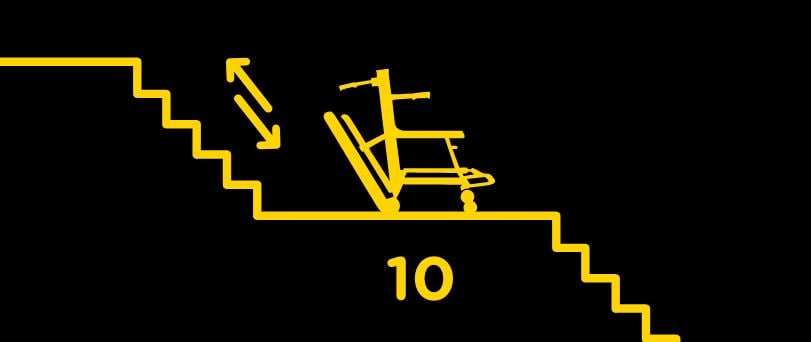People without permanent mobility impairment often take a multistory building’s accessibility for granted. After all, you can always just take the stairs when things turn sour, right? Well, that’s only half true. Those who assist people with disabilities or work in ambulette services know all too well how both architecture or infrastructure can be your worst enemies when emergency strikes.
And when time is of the essence, you can’t afford to let extenuating circumstances hamper your evacuation plan for disabled persons. What you need is a fool-proof blueprint to safety:
PEEP
When you’re in a highrise building, you can have no shortage of pre-planning. A Personal Emergency Evacuation Plan (PEEP) is a bespoke roll call for tenants who cannot reach a place of safety unaided in the event of an emergency. It lays out the escape routes, identifies the team tasked with carrying out the evacuation, and details the refuge areas where people with mobility impairment can await help.
Trial run your evacuation plan
When a natural disaster such as a hurricane strikes, you don’t want to be caught unawares. So to ensure you don’t come up short when the sirens are blaring, you need to have a tried-and-trusted plan that everyone is familiar with. Schedule trial runs of your evacuation plan for disabled persons so that any problems can be solved in a safe space that’s free of the panic and stress that comes with emergency.
Ensure all tenants have prepared a ‘grab and go’ kit beforehand
There’s simply no time to pack your bags or assemble a storm kit when the world is in chaos around you. To prepare for an emergency, have all tenants prepare an emergency kit that includes the following:
- Enough water and snacks for both owner and pets.
- A first aid kit with the necessary medication.
- Flashlight, cellphone, and a multi-purpose tool such as a Swiss Army Knife.
- A contact information sheet and copies of personal documents.
- Spare keys and a change of clothes.
A battery-powered stair chair for when electricity fails
Avoid elevators at all costs. A power cut will sever this means of escape, and strain the efforts of the already overworked emergency teams. Avoiding this situation is simple for those who have full mobility — they can just take the stairs. But for people with mobility impairment there has to be effective methods and procedures in place to get them down the stairs and to safety when the power goes out.
The Mobile Stairlift — no power outlet needed
Lightweight, portable, and battery-powered, Mobile Stairlift is your go-to stair chair for safe descent in the event of an electricity-severing emergency. Find out why it’s the safest, simplest, and most cost-effective means of descending the stairs by downloading our brochure.
For more information about Mobile Stairlift, click here. And should you have any further questions, please contact us.



